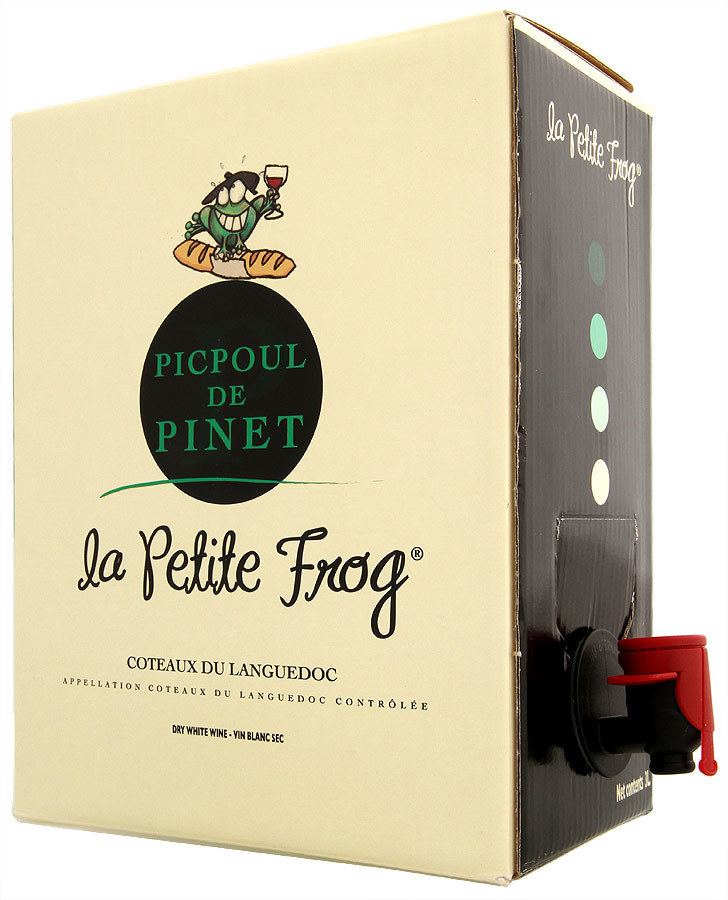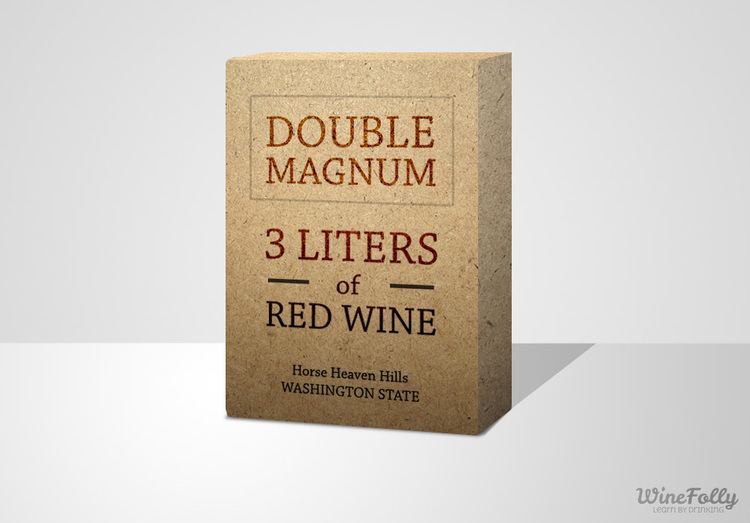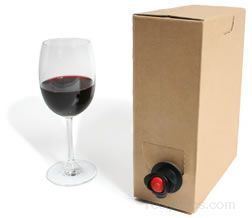Similar Rosé, Wine, Cabernet Sauvignon, Chardonnay, Merlot | ||
Box wine (cask wine or boxed wine) is wine packaged in a bag-in-box. Wine is contained in a plastic bladder typically with an air-tight valve emerging from a protective corrugated fiberboard box. It serves as an alternative to traditional wine bottling in glass with a cork or synthetic seal. It is sometimes called goon, and goon bag in Australia.
Contents

History

The process for packaging 'cask wine' (box wine) was invented by Thomas Angove of Angove's, a winemaker from Renmark, South Australia, and patented by the company on April 20, 1935. Polyethylene bladders of 1 gallon (4.5 litres) were placed in corrugated boxes for retail sale. The original design required that the consumer cut the corner off the bladder, pour out the serving of wine and then reseal it with a special peg.

In 1967, Australian inventor Charles Malpas and Penfolds Wines patented a plastic, air-tight tap welded to a metallised bladder, making storage more convenient. All modern wine casks now use some sort of plastic tap, which is exposed by tearing away a perforated panel on the box. For the next decades bag in a box packaging was primarily preferred by producers of less expensive wines as it is cheaper to fabricate and distribute than glass bottles.
In 2003, California Central Coast AVA–based Black Box Wines introduced mass premium wines in a box, which served to overturn the stereotype that box wines are an alternate packing on inexpensive jug wine. Within the decade premium wineries and bottlers began packaging their own high-quality boxed wine, including French rabbit, Bandit Wines, Octavin, Target, and hundreds of others. This coupled with an increased cultural interest in environmentally sustainable packaging has cultivated growing popularity with affluent wine consumers.
Attributes
Bag-in-box packaging is less expensive, lighter and more environmentally friendly than glass-bottled wine, as well as being easier to transport and store. Typical bag-in-box containers hold 1.5–4 750 ml bottles of wine per box, though come a wide variety of volumes. The tap utilised by bag-in-box packaging greatly reduces oxidation of the wine during dispensing. Compared to wine in a bottle which should be consumed within hours or days of opening, bag-in-box wine is not subject to cork taint and will not spoil for approximately 3–4 weeks after breaking the seal.
Wine contained in plastic bladders are not intended for cellaring and should be consumed within the manufacturer printed shelf life. Deterioration may be noticeable by 12 months after filling.
Controversy
Manufacturers of "higher class" bottled wines have complained about the cheapness of "cask" wines, arguing that they provide a cheap means for alcoholics to become inebriated. In particular, the lower level of alcohol excise levied on cask wine in Australia (compared to beer and bottled wine) has been criticised as encouraging binge drinking. There is also no visible indication, as with a bottle, of the quantity which is being consumed. Cask wine in Australia is colloquially referred to as "goon", which is a term derived from the word flagon, meaning a large vessel used for drink, or "boxy", in reference to it being packaged in a box.
